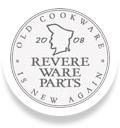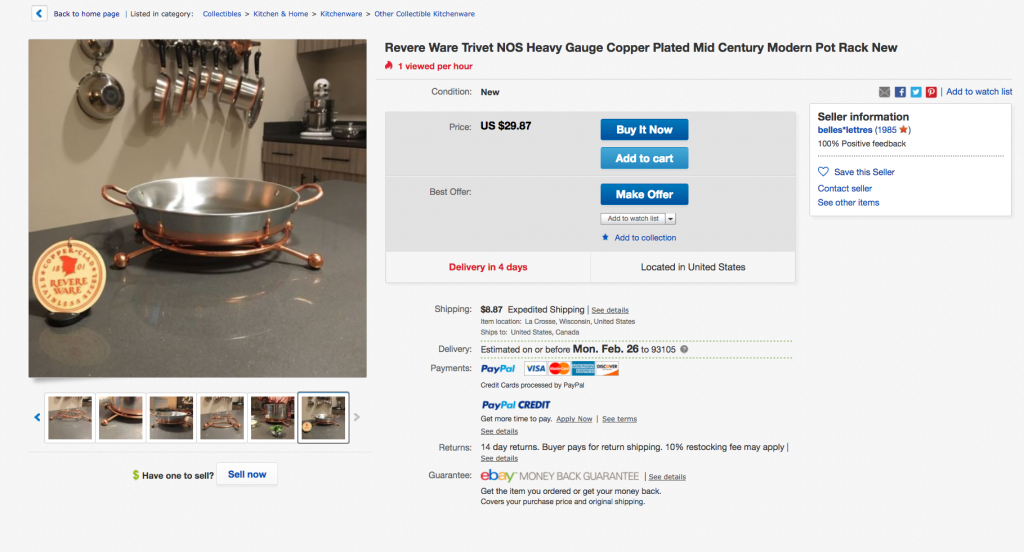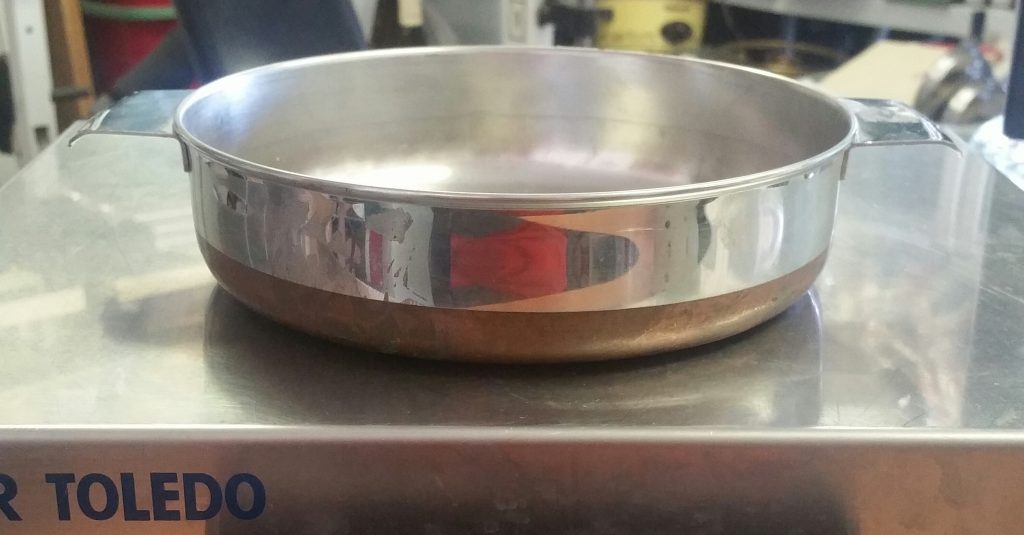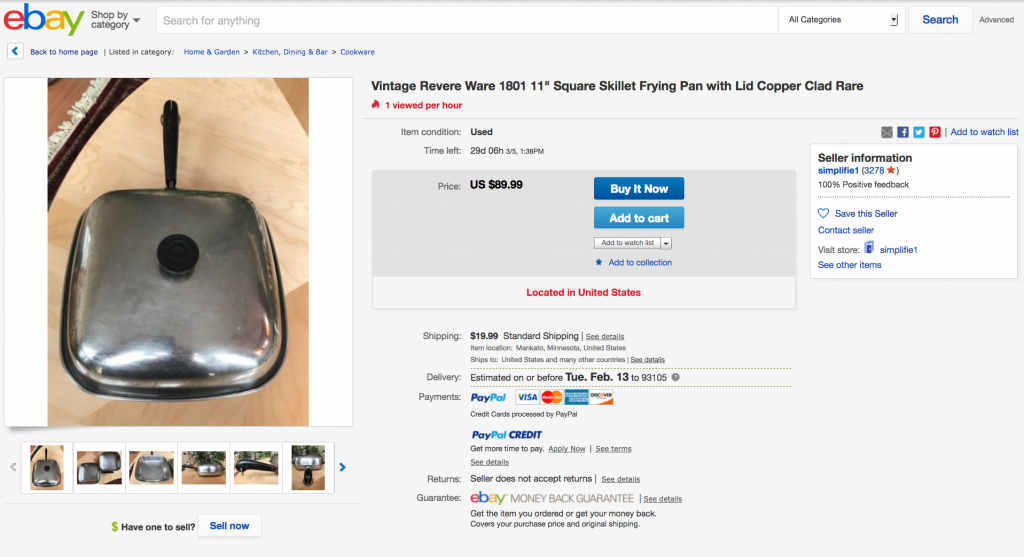While the source of this “product review” looks like one of the spam sites that exists just to get better search engine results by copying and publishing other’s content, the content is mostly on point and I have yet to find another version of this that might be the original.
Revere Ware cookware is legendary for its design and functionality. It features unique copper bottoms on well-constructed stainless steel pots and pans. You may remember these pots and pans from your grandmother’s kitchen, but the Revere company has a much longer history. It was actually founded by Paul Revere himself. In 1801 he founded Revere Copper Company which provided copper parts for military ships, and it later transformed into a cookware company. In 1939 the famous copper-bottomed Revere Ware kitchenware was introduced. It was revolutionary at the time not only for having heat-diffusing copper on the bottom, but for the edges being rounded to make them easier to clean. Additionally, Revere Ware cookware was lighter and easier to handle in the kitchen than most pots and pans of that era. Its handles’ unique design was modeled after the handles of a silversmith’s hammer, a design that proved so popular that it has been copied by many other companies since. Today the Revere line of products upholds its famous legacy through quality construction, classic design and exquisite performance. It continues to make up 25% of the cookware market.
Revere Ware cookware’s hallmark copper bottoms are not simply an aesthetic choice. Copper is a metal that has superior heat conduction characteristics. It spreads heat from the burners of your stove quickly and evenly to the food in your pot or pan, reducing uneven cooking and scorching. It also cools more quickly than other metals to ensure your food is cooked only as long as you intended. In this way, the cook is given more control over heat than with pots and pans of other materials. This is why copper or copper-bottomed cookware has long been the preferred equipment for French cooking, which relies upon delicate sauces that cannot tolerate overcooking or undercooking. Copper has the added benefit of being lighter than many other metals, making it easier to manage in the kitchen.
Competitively priced, Revere Ware kitchenware is often chosen as a less expensive but equally high quality alternative to All Clad. It is durable and long lasting. Many a grandmother is still cooking on the Revere Ware kitchenware she received for her wedding, and it is not uncommon to find a kitchen containing Revere Ware that has been passed on for generations within the family. Because Revere products rarely warp, are resistant to breaking and cracking, and are easy to clean, they tend to stay in fantastic condition for many years.
I agree with everything above except the text in red. I’m almost certain Revere Ware cookware does not make up 25% of the cookware market today, although this might have been true when this entry in the International Directory of Company Histories was published in 1998, which is perhaps where the author got that fact, now far out of date.
The Revere Ware copper bottom cookware on the market today is no where near the same quality as was made back in the day, pre-1968. We have heard lots of stories of poor construction, such as copper bottoms that fall or or simply wear off from scrubbing after a few years.
As for the rest, it is a pretty good description of why perhaps hundreds of thousands or millions of people continue to use their vintage Revere Ware to this day; great design, quality construction, iconic appearance, and longevity.














